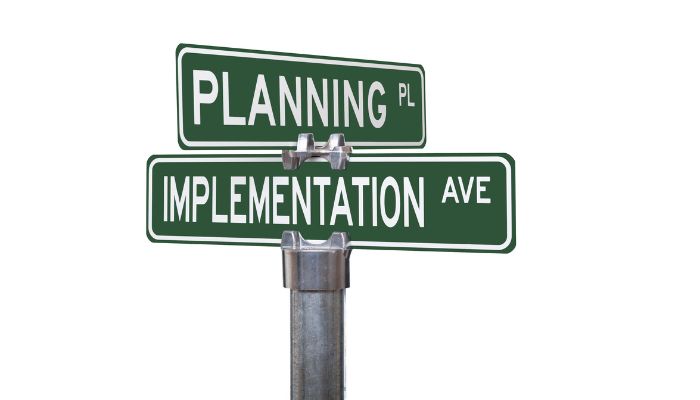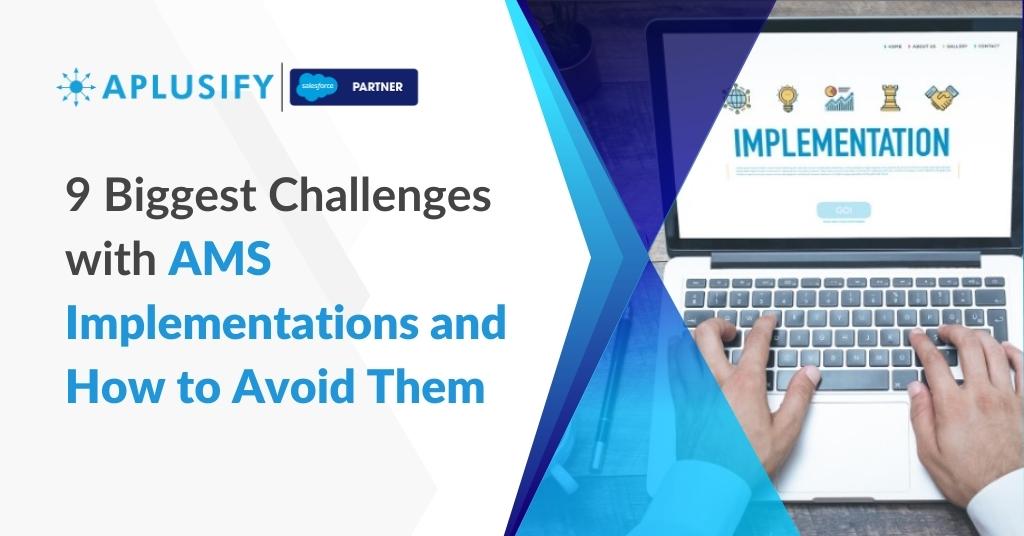As an association looking to update its operations, you may be considering implementing a new AMS system. Implementing a powerful and user-friendly AMS can help your organization streamline administration workloads, increase member engagement opportunities, and improve interactions with stakeholders. However, the process of transitioning from your current setup to a modern platform can involve significant challenges if not managed in the right way. In this blog post, we’ll explore nine common hurdles that associations may face when preparing for or executing AMS implementations and provide examples of how these issues have been resolved in real-world settings. With an understanding of potential risks at each stage of implementation—and strategies for mitigating those obstacles—you’ll be better prepared for successful management of all aspects of your upcoming project.
1. AMS implementations can be extremely complex
First, AMS implementations can be extremely complex based on any number of factors or from a variety of causes. It’s also possible that for a given association they may not have any staff who have gone through an implementation or it’s been a long time or their experience was with another organization. AMS implementations are a great opportunity to review and simplify business rules. It’s quite possible that some of your current business rules are outdated or based on the limitations of your current system. Additionally, selecting and implementing the right technology is one matter, but ensuring that staff are adopting and using a system is quite another. Listen to feedback from staff, note any signs of resistance, and comprehensively address needs through communications and training.
2. Understanding the big picture
Another challenge of AMS implementations is understanding the big picture. It’s important to take a step back to understand goals and priorities, timelines, and staff responsibilities to reduce friction during a major technology project of this nature. Establish and define what the biggest needs are that should be addressed with this transition. Depending on the size and the scope of the project, introducing the functionality of a new AMS in phases could be a viable option. Again, setting realistic expectations will aid the staff with change, and thorough testing and training will prepare them well for using the new software in their roles.

3. Managing realistic timelines, budgets, and workloads
Don’t set arbitrary deadlines like the beginning of a dues renewal cycle for the completion of the implementation, and allow sufficient time for delays that may be beyond the association’s control. Managing realistic timelines, budgets, and workloads can be critical for the success of a project. Consider blackout dates such as holidays, conference season, or membership renewals when essential staff will be unavailable or have other priorities. Also, when assigning tasks to team members, take into account their ongoing responsibilities as those don’t simply stop because of a high-profile technology project. You may want to determine areas where additional support from a vendor or partner is necessary or would provide a boost to the team.
4. Understanding data
Understanding data is important to the successful transition to a new system as well. First, not all data from the previous AMS needs to come over. Decide what is critical and what will need to be accessed repeatedly by more than one department. The project to implement a new AMS is an opportune time to eliminate duplicate or bad data as well as to complete missing data. If you’re merely importing bad data into a new system, the association will not be able to fully leverage the capabilities of the technology or get better insights for decision-making. Schedule a data cleansing or data health check before a data migration to the new AMS.

5. Identifying the right staff for teams
Identifying the right staff for teams during an implementation can help ensure the success of the project. In a small-staff association, these teams may consist of most- if not all- of the employees. Medium to large associations may have more of a luxury of selecting for implementation or testing teams, but make sure different departments and various levels of employees are included to get a number of perspectives. As the system is getting configured to the specific business needs of the association, this is the time for the voice of staff members to be heard to make sure the solution is matching expectations. Communication with the software vendor during implementation and testing is crucial. Any concerns should not be held back as they will not get easier to address later in the process.
6. Configuration vs. customization
Configuration vs. customization is a big point of discussion for many associations. Generally speaking, stay as close to out-of-the-box functionality as possible and consider how the association’s unique needs can be met by the features of the new AMS. Extensive customizations can lead to a longer project timeline and more costs so gaining a clear understanding of how proposed customizations will impact the time and budget for the implementation for your association will facilitate better decision-making. You can limit customizations for your association by assessing how often and to what extent certain processes happen. You can also compare the number of hours a given manual process takes to its projected cost for an automated solution.
7. Assessing real integration needs of an AMS
Assessing real integration needs of an AMS is another area for consideration. What systems or third-party applications does the AMS already have off-the-shelf integrations with? Also, where does the association have greater requirements for integrations and how can the AMS meet those needs? Some systems talking with each other will address the needs of various departments while other data may be more isolated in its use and purpose within the association. Other challenges regarding integrations involve the complexities of the use of APIs, housing obsolete data, and the lack of an overall data management strategy.
8. Ensuring user adoption
“How do we ensure user adoption?” is a question asked often by associations. Instituting solid change management principles is a way to achieve the expected adoption goals for a new AMS. Three components to this approach include providing appropriate training to team members on the use of the new system, identifying champions from across the organization who can test and collaborate to help drive adoption, and engaging these champions to communicate the benefits of using the new AMS across the organization.

9. Handling the implementation challenge
Continue to review the people, products, and processes to make sure they’re aligned for the success of the implementation and adoption of the new AMS. Handling the implementation challenge effectively also requires listening to team members, setting expectations, and clearly communicating roles and responsibilities. Secure executive-level sponsorship and involvement to increase buy-in among all staff, and celebrate project milestones to show appreciation for all of the extra work team members are contributing to the success of the AMS implementation project.
Ultimately, the success of any AMS implementation is based on being organized and prepared. By tackling a project with the right resources and by communicating in an efficient manner, AMS implementations can be made easier for everyone involved. If you need help during your own implementation process, seek out experienced professionals to ensure its success. Aplusify provides implementation services that are sure to meet all of your needs and alleviate some of the stress associated with taking on an AMS implementation alone. Learn more about how Aplusify’s Implementation Services.

Associations have the opportunity to get great information about AMS implementation challenges and learn how to sidestep them by watching our new webinar. Aplsuify’s AMS experts created a presentation packed with helpful tips for every association. This knowledge will be invaluable if you are looking to navigate implementation issues, assist with implementation projects or just increase your understanding of the implementation process. Make sure you don’t miss out and view our webinar now!









